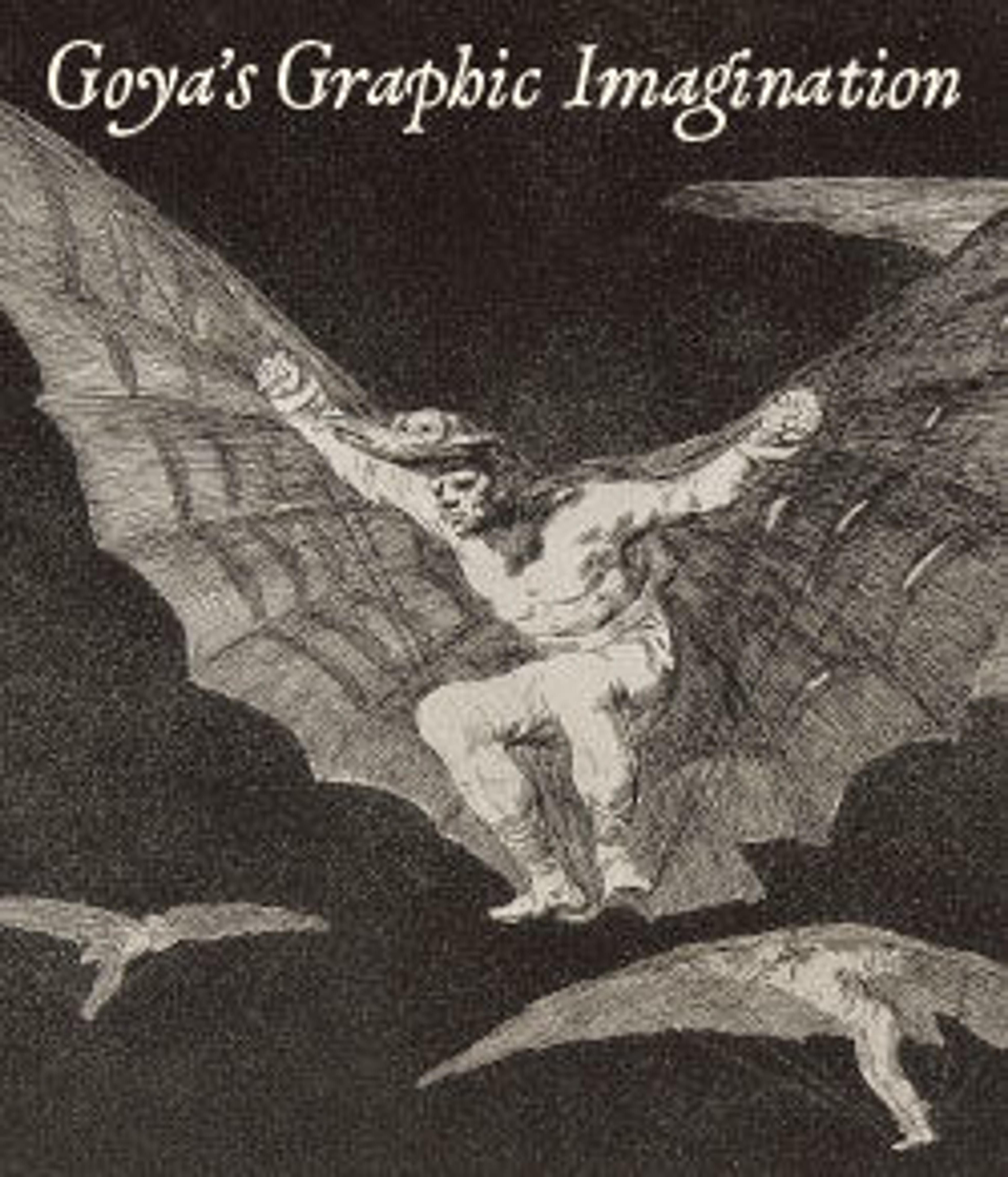A Way of Flying, from "The Disparates" (Follies / Irrationalities)
In one of the most striking prints from the series, five men wearing helmets in the shape of a bird’s head fly aided by wings strapped to their wrists and feet. The image has been interpreted as a metaphor of the latest political and philosophical currents, which were opposed by the most conservative sectors of Spanish society. Goya’s image can also be associated with late eighteenth-century spectacles featuring aerostatic balloons and parachute descents that were still popular in Madrid in the 1810s. The contraption worn by his figures also recalls a "new machine for flying" invented about 1808 by the Austrian clockmaker Jacques Degen and described in an 1809 periodical.
From the posthumous first edition published by the Academia de San Fernando in Madrid in 1864 under the title 'Los Proverbios'.
From the posthumous first edition published by the Academia de San Fernando in Madrid in 1864 under the title 'Los Proverbios'.
Artwork Details
- Title: A Way of Flying, from "The Disparates" (Follies / Irrationalities)
- Series/Portfolio: The Disparates (Follies / Irrationalities)
- Artist: Goya (Francisco de Goya y Lucientes) (Spanish, Fuendetodos 1746–1828 Bordeaux)
- Date: ca. 1815–16 (published 1864)
- Medium: Etching, aquatint, drypoint
- Dimensions: Plate: 9 5/8 × 13 7/8 in. (24.5 × 35.3 cm)
Sheet: 13 3/16 × 19 1/16 in. (33.5 × 48.4 cm) - Classification: Prints
- Credit Line: Harris Brisbane Dick Fund, 1924
- Object Number: 24.30.14
- Curatorial Department: Drawings and Prints
More Artwork
Research Resources
The Met provides unparalleled resources for research and welcomes an international community of students and scholars. The Met's Open Access API is where creators and researchers can connect to the The Met collection. Open Access data and public domain images are available for unrestricted commercial and noncommercial use without permission or fee.
To request images under copyright and other restrictions, please use this Image Request form.
Feedback
We continue to research and examine historical and cultural context for objects in The Met collection. If you have comments or questions about this object record, please complete and submit this form. The Museum looks forward to receiving your comments.
